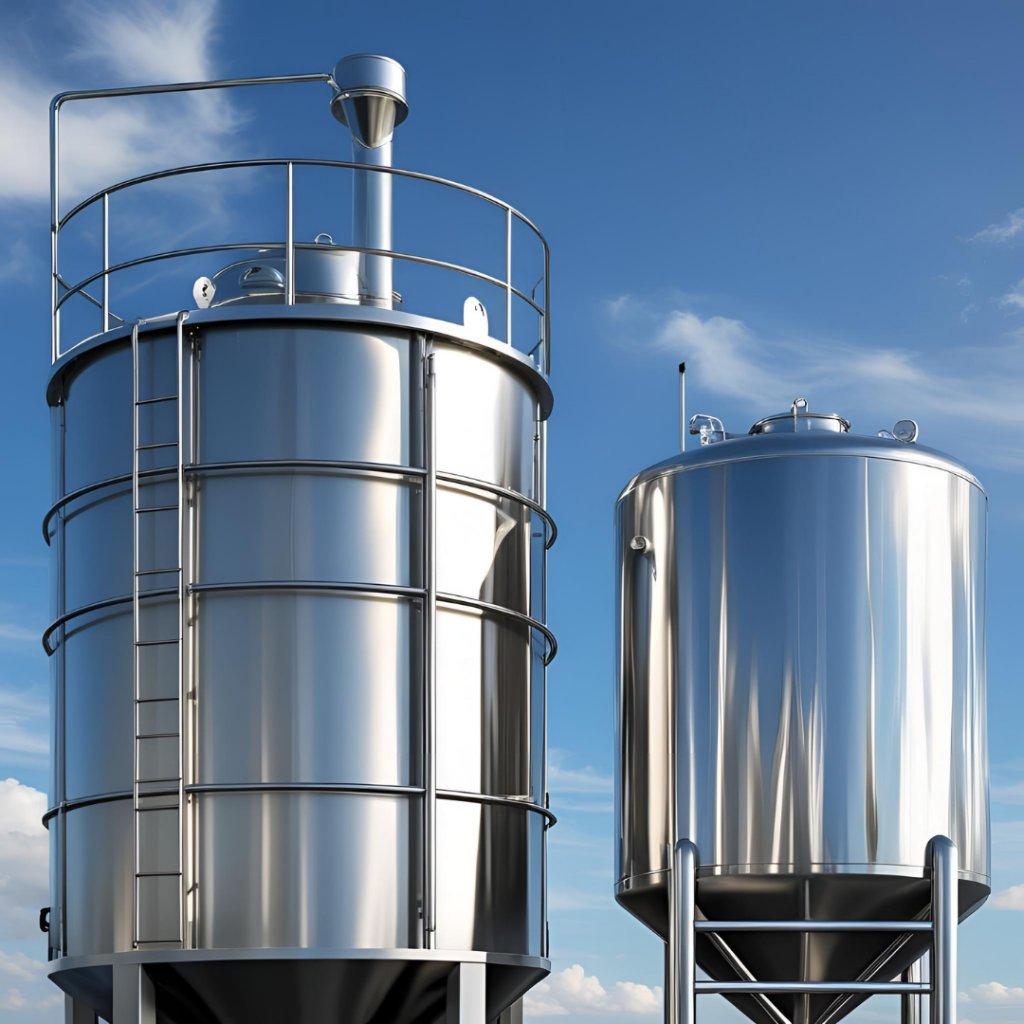What is a Stainless Jacketed Tank?
Definition and Basic Structure
A stainless jacketed tank is an industrial tank, usually made of stainless steel, with a jacket on the outside to maintain or change the temperature of the product stored inside. This jacket helps control the temperature of the product inside the tank by allowing the circulation of a heating or cooling fluid.
Difference from Other Tank Types
While standard tanks only serve a storage function, jacketed tanks offer extra functions such as temperature control. This feature makes them indispensable, especially in sensitive production processes.
Advantages of Stainless Jacketed Tanks
Heat Insulation and Energy Savings
Temperature-Controlled Storage
These tanks ensure that the product inside remains at a constant temperature. This reduces energy consumption and preserves product quality. It offers a great advantage, especially for products like milk, fruit juice, and chocolate.
Durability and Long Life
Stainless Steel Quality
Jacketed tanks made of 304 or 316L quality stainless steel are resistant to corrosion. They can be used for many years without requiring maintenance.
Hygienic Storage Advantage
Stainless surfaces do not allow the formation of bacteria and microorganisms. This feature is particularly important in food and pharmaceutical production.
Where Are They Used?
Food Industry
Ideal for the hygienic storage and temperature control of many liquid food products such as milk, yogurt, wine, and olive oil.
Chemical and Cosmetics Industry
Jacketed tanks are indispensable for keeping chemical substances at a stable temperature. They are suitable for temperature-sensitive products like perfumes and lotions.
Pharmaceutical and Health Products Manufacturing
In areas where sterile conditions are required, stainless jacketed tanks both provide heat control and do not compromise sterility.
Heating and Cooling Systems in Jacketed Tanks
Jacketed Structure
Thanks to the jacket system integrated into the tank’s body, fluids like water, steam, or glycol circulate around the tank and provide temperature control.
Heater Resistance or Steam System
The contents can be heated with steam or an electric resistance heater. These systems are generally preferred for products like chocolate and beeswax.
Coolant Circulation Systems
For cooling, glycol or cold water circulation is provided. This system is especially used for fermented products like yogurt and beer.
Things to Consider When Choosing a Jacketed Tank
Capacity and Sizing
Custom production can be made from 100 liters to 50,000 liters according to your business needs. The right capacity increases efficiency.
Material Quality (304 – 316L)
While 304 grade is generally sufficient, 316L grade should be preferred for aggressive chemicals.
Suitability for Purpose
Different designs are required for the food, pharmaceutical, and chemical sectors. Asinoks manufactures by considering these differences.
Asinoks’s Production Quality
High-Tech Production
Flawless production is ensured with CNC-controlled welding machines and automatic polishing systems.
Project-Specific Design
Every business has different needs. Asinoks offers engineering solutions specific to your area of use.
After-Sales Technical Support
Support continues after installation. A long-term partnership is aimed for with technical service and maintenance.
Ease of Cleaning and Maintenance
CIP (Cleaning in Place) Compatible Design
Asinoks’s tanks can be easily cleaned with CIP systems. This saves time and labor during production.
Exterior Coating and Interior Polish Quality
The tanks have a satin finish on the outside and a mirror polish on the inside. This provides both a hygienic and aesthetic appearance.
Compatibility with Automation and Integrated Systems
Automatic Control with PLC
Tanks can be managed automatically by connecting to a PLC system with temperature sensors.
Monitoring with Sensors and Gauges
The process can be monitored with a user-friendly interface thanks to pressure, temperature, and level gauges.
Frequently Asked Technical Questions
How much pressure can a jacketed tank withstand?
They are generally manufactured to withstand pressures between 1-4 bar. Higher pressure models can also be designed according to need.
How long does the heating time take?
It varies depending on the tank capacity and the type of energy used, but it is generally between 30-90 minutes.
How does the cooling system work?
Cold water or glycol is circulated in the jacket to lower the temperature of the contents. The cooling system can be activated automatically.
Why Asinoks?
Domestic Production and Fast Delivery
All production is done in Turkey. This means shorter lead times and technical support.
Quality Certificates and Compliance with Standards
Safe and certified production with CE, ISO, Food Compliance documents.
Conclusion: A Reliable Solution in Industrial Storage
Stainless jacketed tanks are indispensable for all sectors where temperature control and hygiene are required together in production processes. They both save energy and increase product quality. Working with expert manufacturers like Asinoks directly affects the long-term efficiency of your business.
Frequently Asked Questions (FAQ)
- For which sectors are stainless jacketed tanks suitable?
They are ideal for sectors with temperature sensitivity, such as food, chemical, cosmetics, and pharmaceuticals. - If I order from Asinoks, how long does the production time take?
Standard models are completed in 1-3 weeks, while special projects are completed in 4-6 weeks. - What type of energy is used to heat the tanks?
Heating is possible with electricity, steam, or hot water. - How are stainless tanks cleaned?
Hygiene is easily ensured with a CIP system or manual cleaning. - Can the tank capacity be increased?
Capacity can be increased with parallel systems after the initial investment.


